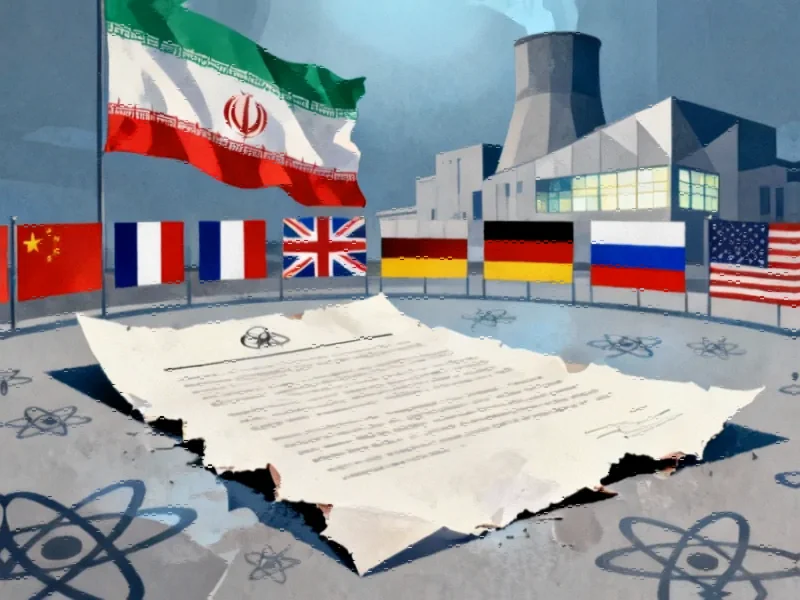Beijing’s Strategic Pivot to Technological Self-Sufficiency
As more than 200 top Chinese Communist Party leaders convene in Beijing this week, technology advancement has emerged as a cornerstone of China’s national strategy, according to long-time China expert Ken Jarrett. The October 20-23 plenum will set the framework for the country’s next five-year economic plan, scheduled for finalization in early 2026, with technological innovation positioned as a critical component of China’s economic restructuring efforts.
Table of Contents
“The party already did mention that the plan should focus on high-quality development as well as developing new-quality productive forces in light of local conditions,” Jarrett noted in an exclusive interview. “This is code for a focus on high-technology innovation as well as cutting-edge technologies.”
Geopolitical Tensions Driving Technological Independence
China’s intensified focus on technology development comes against the backdrop of escalating tensions with the United States, particularly regarding access to advanced semiconductors and technology. Jarrett, a senior advisor at Washington-based DGA-Albright Stonebridge Group with decades of experience in China and East Asia, emphasized that these policy directions have been shaping China’s economic planning for several years.
“These are areas of emphasis that have been shaping policymaking for the last few years as China is looking to restructure its economy to focus on more technologically and innovative products,” Jarrett explained. The strategy aims to move China toward higher-quality, greener products while insulating the country from geostrategic tensions that have limited its access to U.S.-provided technology.
Key Technology Sectors Under Scrutiny
Observers should pay close attention to several critical areas during the plenum’s discussions, according to Jarrett:
- Artificial intelligence and other emerging technologies receiving additional emphasis
- Localization of high-technology production to reduce dependency on foreign sources
- Development of “new-quality productive forces” tailored to regional capabilities
- Green technology and sustainable innovation initiatives
The expert highlighted that “at this upcoming review, we should all pay attention to what is said about high-quality productive forces and new areas of technology that might be in for additional emphasis.” This focus reflects China’s determination to secure its technological supply chains against potential disruptions from U.S. policy changes.
Economic Context and Five-Year Plan Continuity
The leadership meeting occurs as China’s economic growth appears likely to meet the government’s target of approximately five percent. The plenum will shape the direction of the 15th Five-Year Plan, which will guide the world’s second-largest economy from 2026 to 2030—a period Chinese officials describe as “a defining phase on China’s path toward basically achieving socialist modernization by 2025.”
Jarrett observed that “five-year plans tend not to differ dramatically from plan to plan since it touches on all aspects of China’s economic and social development.” He emphasized the continuity in Chinese policymaking, suggesting that the upcoming 15th five-year plan will maintain this pattern of evolutionary rather than revolutionary change.
Implementation Timeline and Specifics
While the plenum will establish broad policy directions, detailed implementation plans will emerge later. “I’d note that the plenum itself will speak in generalities about the plan, and we’ll have to wait until March before we are able to see more specifics about how the overall objectives articulated at the party plenum will be implemented in actuality,” Jarrett cautioned.
This timeline suggests that while the technological direction will be set this week, specific policy measures, funding allocations, and implementation strategies will become clearer in the coming months as the plan moves toward final approval., as earlier coverage
Broader Business Implications
As former president of the American Chamber of Commerce in Shanghai, Jarrett also commented on the mixed signals from recent business surveys. While five-year outlooks among foreign businesses have declined due to concerns about economic growth, global politics, and rising domestic competition, current business performance shows improvement.
“Local companies are more effective and more competitive; this is a bigger worry for companies,” Jarrett noted, highlighting the challenging competitive landscape foreign firms face in China’s evolving market. However, he pointed to positive indicators, including improved profitability among chamber members, with 71% reporting profits compared to 66% the previous year.
The convergence of technological ambition, economic planning, and geopolitical positioning makes this week’s plenum particularly significant for understanding China’s future trajectory in the global technology landscape.
Related Articles You May Find Interesting
- Europe’s Digital Defense Revolution: How Startups Are Winning the War Against AI
- Zotac Unveils World’s Most Compact Gaming PC Featuring RTX 5060 Ti Graphics
- Transform Your Smartphone into a Portable Gaming Powerhouse with Backbone One’s
- Zotac Redefines Compact Gaming with Ultra-Small PC Featuring Discrete RTX Graphi
- The Agentic AI Investment Boom: Why Data Infrastructure is the Real Bottleneck
This article aggregates information from publicly available sources. All trademarks and copyrights belong to their respective owners.
Note: Featured image is for illustrative purposes only and does not represent any specific product, service, or entity mentioned in this article.



